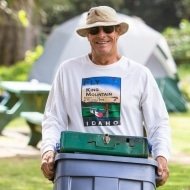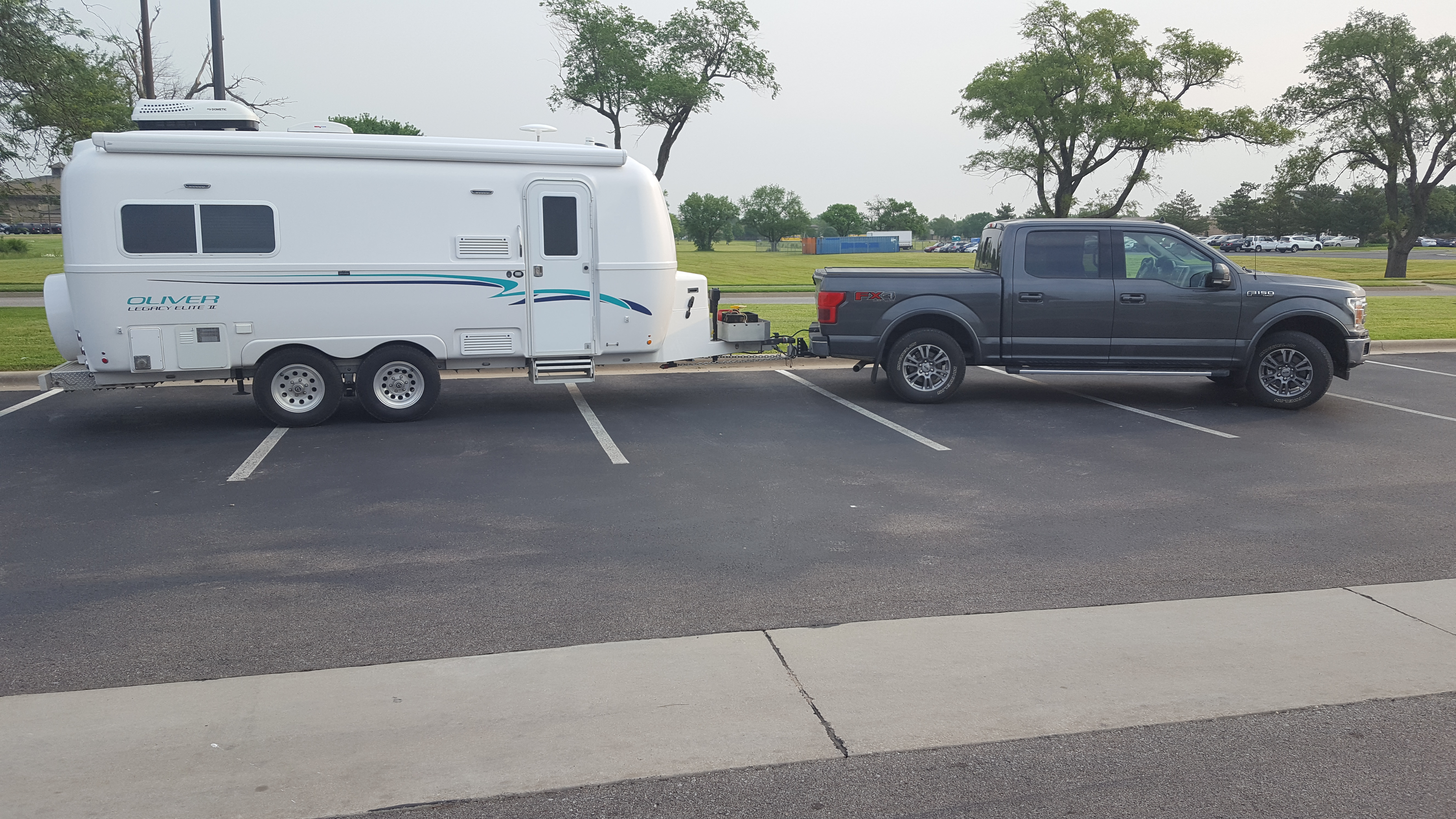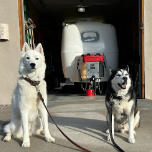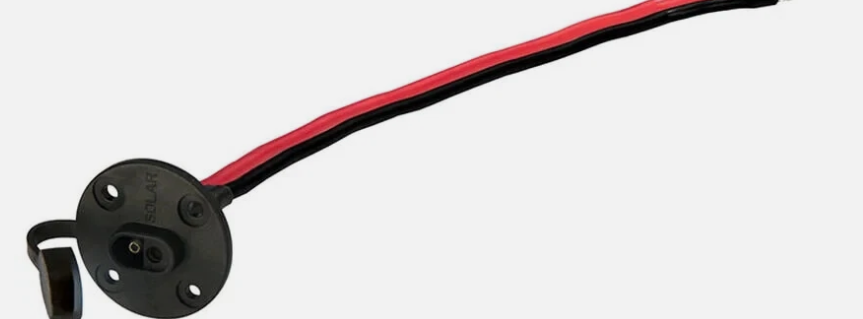-
Posts
2,150 -
Joined
-
Last visited
-
Days Won
62
Geronimo John last won the day on December 22
Geronimo John had the most liked content!
My Info
-
Gender or Couple
Couple
My RV or Travel Trailer
-
Do you own an Oliver Travel Trailer, other travel trailer or none?
I own an Oliver Travel Trailer
-
Hull #
342
-
Year
2018
-
Make
Oliver
-
Model
Legacy Elite II
-
Floor Plan
Twin Bed Floor Plan
-
What model is your other RV or Travel Trailer?
Sold Jayco UDST Pop-up
Recent Profile Visitors
7,022 profile views
Geronimo John's Achievements
-
Geronimo John started following Dehumidifier , New pump, not building pressure , solar hookup? and 2 others
-
It doesn't. It is often sucked in. For example, It often is a "Sucked In" by the pump from a loose or faulty fitting on the draw side. If boondockng mode, it us ususally your hose bibb connection haing a bad hose rubber gasket or is not tight. Such conditions will really slow down the transport of water from your gerry can into the pump and FWT. Just one example. Another is having a loose connection sucking air in the line from that runs from the FWT to the pump. Etc. GJ
-
I prefer not drilling large holes in the side or the top if they can be avoided. So for our solar suit case, I plug it into one of these mounted on the door of the battery area. It only requires a small hole, easy to mount, and could easily be repaired (or replaced) should for some reason I no longer have my solar suit case setup. And it is quite inexpensive vs. the larger plug holes. Or you could mount it thru one of the vent holes. However it is limited to 30 amps for the 10 AWG one. It typically used for 200 watts of solar panels. GJ
-
I periodically mention especially these two safety tips, mostly for new owners to the forum.... and to keep especially these three safety tips "top of mind" for us older ones.
-

BRAKES WORK... 2019 OLIVER ELITE II #448
Geronimo John replied to BoondockingAirstream's topic in Mechanical & Technical Tips
I agree. Sadly, some folks are just a bit.... odd. Glad you are not one of them. 🙂 GJ -
Likely the first item AI answered with: Brand Name KNKA is a brand specializing in environmental home appliances such as dehumidifiers, air purifiers, and humidifiers. According to their official website, the letters stand for the slogan "Keep Natural Keep Advancing". Other potential meanings Kanka (Turkish slang): The word "kanka" in Turkish is a common slang term for "buddy," "pal," or "bro" and is a shortened form of "kan kardeşi" (blood brother/sister). Kaṅka (Sanskrit): In Sanskrit, Kaṅka (कङ्क) is a word with multiple meanings, often referring to a type of bird like a "heron" or "curlew". NKA (Medical abbreviation): In a medical context, the abbreviation used is often NKA, which stands for "No Known Allergies". K, Ka (Radar detection): When discussing radar detectors, K-band and Ka-band are frequency ranges used by police radar guns. Ka is short for the German word kurz-above, meaning "short".
-
Bet that experience resulted in a few "bad words" as another famous owner has had. Glad you were not hurt and figured it out. One suggestion that many owners have adopted when working on the tires and/or axles, or for that matter anything under Ollie, is to leave the trailer connected to your 6,000 pound anchor (TV). When doing so, tie flagging to the steering wheel as a reminder not to drive off. The anchor will help stabilize things a bit. Another is to try always to do such work on a "Hard Stand" such as asphault or concrete. If not on such a surface, place dunnage under your jack feet to reduce the possibility of one of the jacks sinking in a soft spot. This has happened before. GJ
-

Engine Seizure - What I Learned
Geronimo John replied to Cort's topic in Mechanical & Technical Tips
Cort: Wow, between Leaf Springs, Lug Nuts and a Blown Engine you've had a tough season for sure. I hope the bad karma truck passes you by for awhile. May only Good luck and sunshine visit you! GJ -
Steve great picture! GJ
-
Doing some more research: Bad News: Apparently this problem was documented in 2021 in side by side comparison video. They states that the Brand B was 90% there, and only needs $5 in parts. Suggest you view this one. This now could be a class action. Good News: Looking at the video it is evident that the problem COULD BE FIXED. Question I have is did DF change the design of their batteries to fix the problem back then? Or did they ignore the warning? GJ https://www.youtube.com/watch?v=Tt0joJc9HPo&t=294s
-
That is a bit concerning. GJ
-
One of the very spot on early-on statements of this forum was from Patriot: Their first written response as shreadded in the YouTube response was characterized as "Gaslighting". I think that was a bit harsh. But it did not go over as well as I am sure DF wished. They would have been better served by stating that they have been made aware of the issue, and will commit the resources to determine the root cause. And then appropriate remediation as appropriate. They lost ground that can not easily be made up. But the PR damage is done, and it needs to be repaired. Above in this getting longer and longer thread, I postulated that the root cause of the heating, and the failure mechanism that resulted in the arching, was likely excessively amp draws on a per battery basis. DF needs a new approach here is what I recommend: Test beyond what OTT MountainOliver did. DF should test their 100's with progressively higher loading to the point where the battery B+ terminal base temperature approaches what is safe for the design. My SWAG is that it will tolerate up to 15 minutes at 200 Amps peak and likely 100 amps contineous to 10% SOC before the B+ temp is highenough to cause concern for the plastic deformation of the "plastic" structural support of of the bolt and post. As most of our OTT OE2 owners with the BB's have installed 3 BB's, that level would be fine for our occasional A/C on inverter with other loads such as the microwave also on line. Knowing the facts would basically would go a LONG WAY to ease the concerns on this thread for sure. Not to mention a lot of other owners across their RV customer base that operate as we do. This would also buy time to safely allow us to operate, while DF address others in higher need. But still address ours in due time. Secondly, Present their findings to their customers. If a redesign of the B+ post is needed, tell us. Finally, DF should state that they will stand behind their ten year warranty. And if they cannot do so that they will provide a prorated reimbursement of the cost we paid for them. These actions would put DF ahead of the issue as so wisely stated by Patriot. GJ
-
The 24 hours is sort of a standard. But the temperatue of the unit when it was not upright is a significant factor. The units typically sit in a warehouse. It may have "tempered air" not for the stored stuff, but for the workers. Then off into truck, train, and aircraft... all with potentially extremely low temp's. The warmer unit flows oil and refergerant down to the bottom of the coils. You get it, set upright and it may or may not come up to full room temperature before it is turned on. The oil/refergerant is viscus. The pump often does not have the power to move that incompressable fluid, rotor locks, amps surge, and blows the fuse. It would be wise to recommend 24 hours in a warm area to avoid this scenario. Then store it upright at all times. GJ
-
I think the videos shows is a terminal sparking that results in higher and higher temperatures as a result of Ohm's law. How? As the loose mechanical connection gets hotter corrosion is inevetiable. The corrosion increases the resistance of the connection, and slowly the connection resistance increases. To the point that the battery is damaged. I do not think that this is a cell related chemical reaction, but heat generation caused by the connection's resistance increasing and the resultanting increase in heat generations. This would continue until really bad things could happen ultimately leading to a melt down. If I understand this properly, the bolt goes thru a case plastic section and the copper terminal and to two jamb nuts. The jamb nuts are not coming loose, but the current has heated the case plastic section to the point that the bolt head, and likely a washer, moves part way through the case material as the temperature effects the plastic. This in effect causes the connection to loosen. Loose connections in electrical connections, especially high amperage potential connections, heat up. As the process contnues, the tremendous short circuit potential of these batteries cause the connection to get really really hot. If my analysis is sound, then the Lithium cells for the vast majority of the batteries that have been lightly loaded (See my post above) could have their tops laser cut off and a redesigned termial installed. Then fuse on a redesigned cover that structurally reinforces the terminal. Basically a solid bolted internal termination to the terminal seperate from the structural support for the terminal. GJ In the past five years especially, DF has diversified into other related markets and their substantially has likely increased. As such, they may be able to fund the repair of the batteries. Hopefully also the shipping costs as well.













